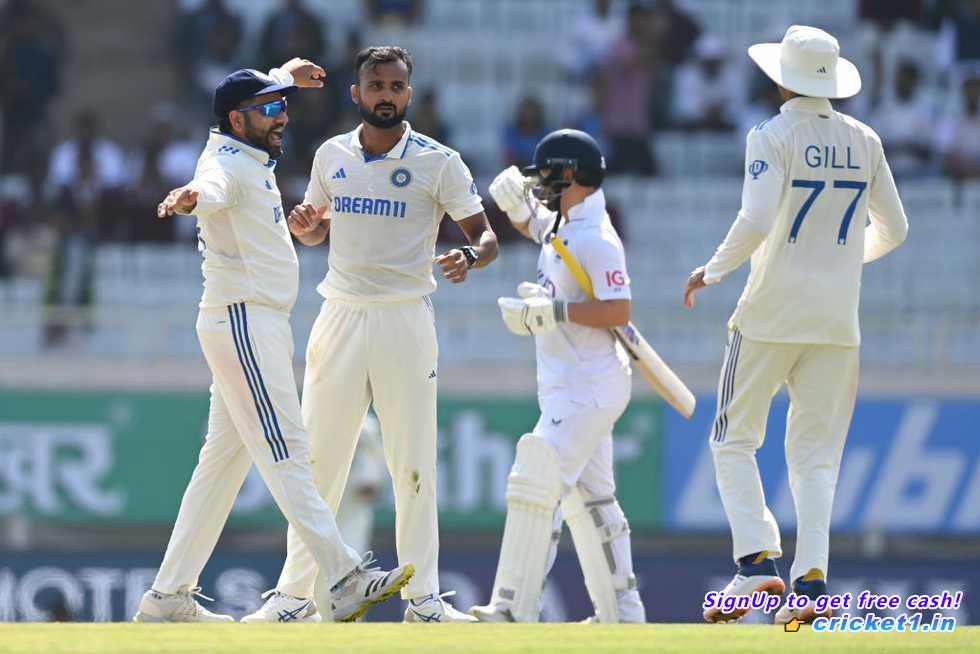
As India prepare for a red-ball reboot following an extensive stint of limited-overs cricket, the 2024 Duleep Trophy emerges as a pivotal starting point for the upcoming series of 10 Test matches over the next four and a half months. This prestigious domestic tournament, beginning on September 5, will serve as a litmus test for India’s top domestic talent, providing them with the opportunity to acclimate to the demands of the long format and to stake their claim for spots in the Test squad.
The Indian Test team appears mostly settled across various departments, including the crucial reserves, yet some questions persist. The most pressing issue revolves around fast bowling, given the lingering injury of Mohammed Shami. Nearly a year after his standout performance in the ODI World Cup, Shami remains on the sidelines, necessitating the search for a reliable third seamer. Mukesh Kumar initially seemed to secure this position during the series against England earlier in the year. However, an underwhelming performance in Visakhapatnam saw him yield his place to Akash Deep, who made a more significant impact in his sole Test appearance.
Despite these developments, the quest for a dependable third or fourth seaming option remains open, making it a focal point in the Duleep Trophy. Contenders such as Mukesh Kumar and Akash Deep are not alone in this race. Various other pacers have had intermittent stints with the national team, including Prasidh Krishna, who recently missed the Maharaja T20 Trophy due to injury and will also miss the opening encounter of the Duleep Trophy.
Other aspirants include Khaleel Ahmed, who has yet to solidify his credentials as a red-ball bowler, and Avesh Khan, who has demonstrated his potential. Additionally, domestic cricket standouts like Yash Dayal, Vidwath Kaverappa, and Vyshak Vijaykumar are eager for opportunities at the highest level. Seasoned campaigners such as Sandeep Warrier, Tushar Deshpande, Harshit Rana, and Navdeep Saini, each with their unique skill sets, also remain in contention.
The abundance of options creates a challenging scenario for selectors and team management. They must identify pacers who can excel in India, adapt to Australia’s conditions, and promise longevity. Paras Mhambrey, India’s bowling coach until the recent victorious T20 World Cup, views this period as an opportunity for thorough assessment. “With so much Test cricket ahead, a pool of bowlers will be essential to manage the workload over the 10 matches, given that key players like Bumrah or Siraj will need rest,” he shared with Cricbuzz.
Mhambrey emphasizes the importance of scrutinizing bowlers across various stages of a game. “On flatter wickets, it’s crucial to see how these bowlers perform during their third or fourth spells. Such assessments provide insights into their fitness, game understanding, and adaptability,” he says. “This process allows us to shortlist six or seven quality fast bowlers to rely on and rotate, especially since most of them also play short formats.”
Determining this shortlist requires meticulous consideration, as the pool of frontline pacers for the Duleep Trophy comprises 17 names. Given the conditions in Bengaluru and Anantpur, team management and captains may be inclined to field no more than two specialist pacers.
. However, the interplay with the senior team’s requirements may allow for rotation within these squads, mirroring the norm in such tournaments. Additional specific requests may further influence selections.
“If a particular bowler is in the scheme of things, selectors could certainly have conversations with the captains to ensure their participation in critical phases,” Mhambrey suggests. “For instance, if we want to see a bowler perform after lunch or at the end of the day’s play, such arrangements can be made. International batsmen are participating in the tournament, so performing well against quality opposition enhances a bowler’s selection prospects.”
The selection process also involves labeling candidates for challenging overseas tours. While Mhambrey has one eye on the England tour next year, the immediate focus is the high-profile tour to Australia in just over two months. Except for Navdeep Saini, none of the 17 pacers have prior red-ball experience in Australian conditions.
“In India, we may not play more than two seamers due to the nature of the pitches. However, in Australia, the Kookaburra ball and bouncy conditions require different strategies. We need bowlers who can capitalize on the first 30-35 overs with the new ball,” explains Mhambrey. “I am keen to see how Prasidh Krishna performs. If he excels in the Duleep Trophy, he could provide the much-needed variation as a third seamer due to his bounce.”
Prasidh Krishna, the 28-year-old Karnataka pacer, is currently recuperating from a quadriceps injury and will miss the opening Duleep Trophy game. However, he remains part of the training group for Shubman Gill-led Team A, potentially featuring later in the tournament.
Another aspect of the selection process is finding a left-arm pacer. Khaleel Ahmed, Yash Dayal, and Arshdeep Singh will feature in the Duleep Trophy, offering an opportunity for grooming. “We want a left-armer in the mix for a different angle,” Mhambrey notes.
For immediate selections, like the upcoming Bangladesh series, recent form will be a critical criterion. “Form is essential, especially for bowlers like Avesh Khan and Khaleel Ahmed, who have been around for a while,” Mhambrey says. He cites Akash Deep’s selection for the England series by Ajit Agarkar based on his recent performances against the England Lions, highlighting that those making impactful, immediate impressions can quickly force their way into the national squad.
In summary, as India prepares for a challenging red-ball season, the Duleep Trophy will be a crucial stage for pacers to demonstrate their skills and cement their positions in the national team. The coming weeks promise compelling cricket and potentially decisive performances shaping the future of India’s fast-bowling arsenal.

